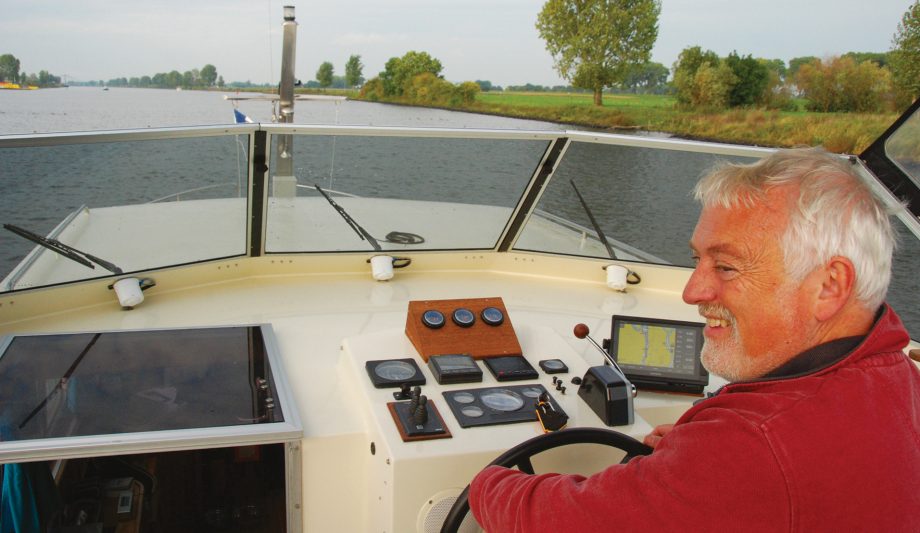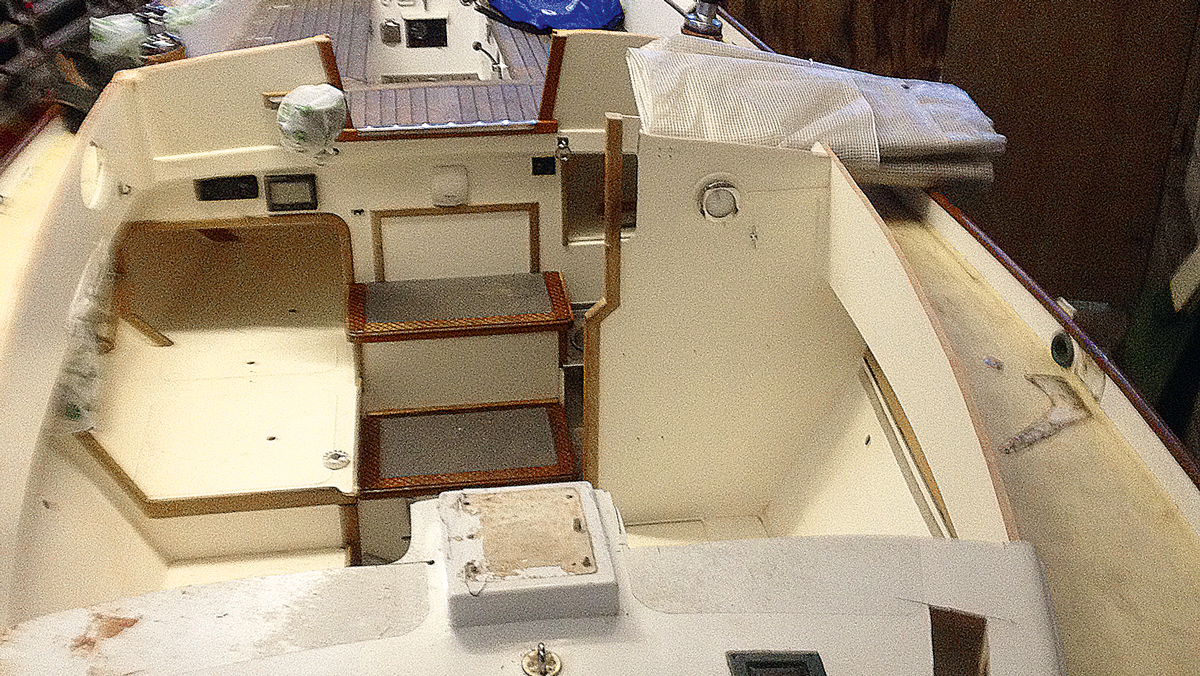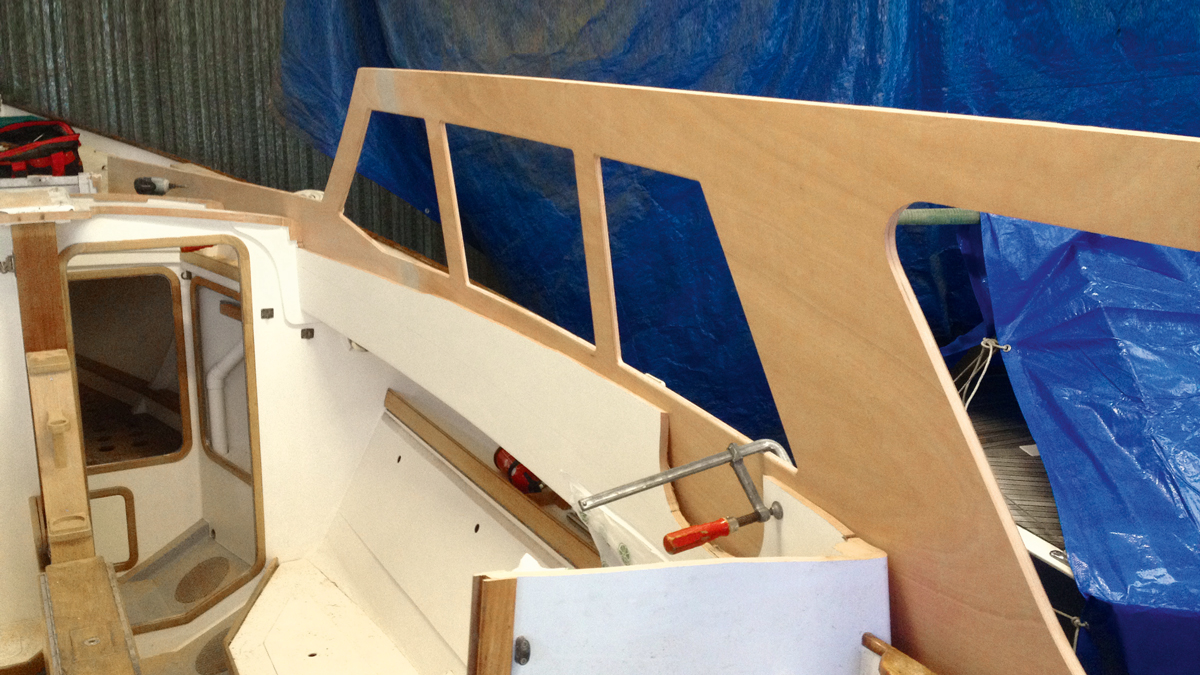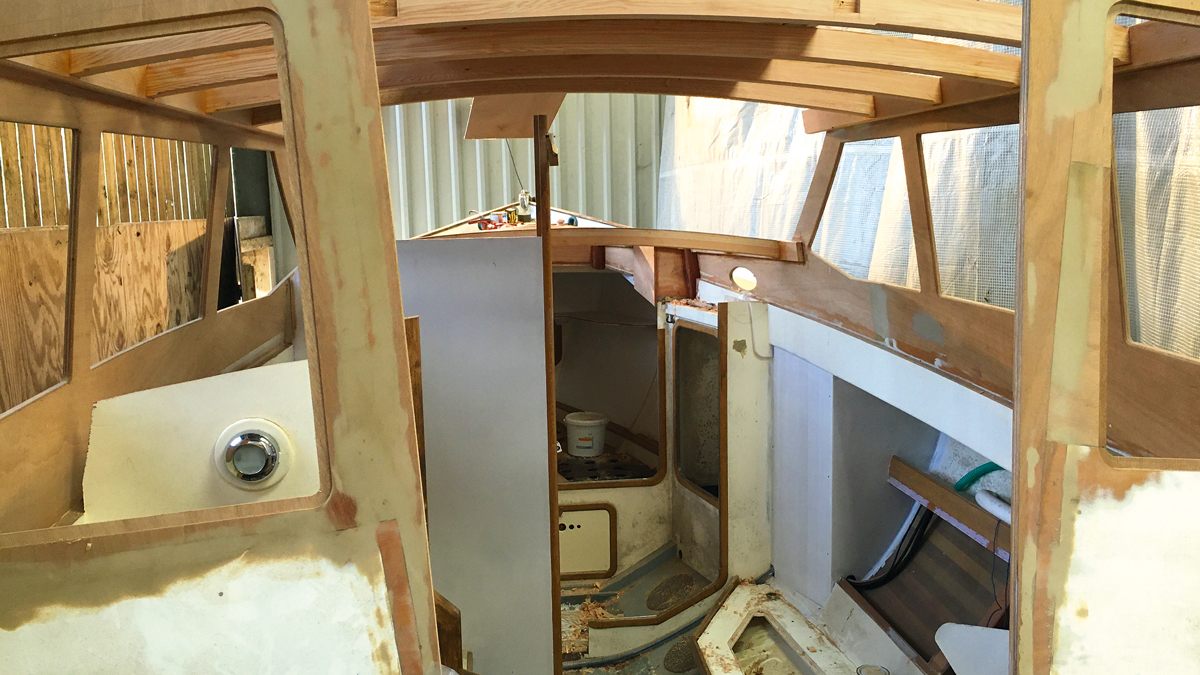When Charles and Gillian Taylor decided to make the move from sail to power they couldn’t bear to leave their custom-built sailing boat behind. The solution was simply to transform it into a gorgeous little motor boat.
Soon after they got married, in 2007, Charles and Gillian Taylor commissioned Dick Phillips to build them a sailing boat, “as a sort of wedding present to ourselves,” Charles tells me.
The boat in question was a Nigel Irens-designed Roxane which was intended to be “halfway between” the sailing boats that Charles and Gillian had each owned previously.
At that time, the Roxane was being built in GRP in Holland. The Taylors, however, decided theirs should be timber or, more specifically, western red cedar strip planking over a Douglas fir backbone and frames, all sheathed with epoxy resin and glass cloth.
Article continues below…

Sail to power converts: Yacht owners explain why they moved to the dark side

X-Power 33C first look: Danish sailing yard aims for speed and comfort
Modifications begin
Roxanne of Restronguet was launched in May 2009 and for several years the Taylors raced and cruised her in the West Country while keeping her on a drying mooring near their home in Restronguet Creek.
Although Nigel Irens had designed the boat with a two-masted lugger rig with unstayed carbon masts, Roxanne initially had a gunter sloop rig, but this was soon converted to a cutter rig with a bowsprit and then to a more powerful rig with an integral topsail.

Roxanne in her former sailing days
After a few years the Taylors became less enthusiastic about using the same boat for both racing and cruising. About four years ago they took the first step to solving this problem by buying a Piper, a 24ft day-sailing boat to use purely for racing in a growing fleet at St Mawes Sailing Club.
Meanwhile they continued to cruise Roxanne but found they only really enjoyed sailing her – especially when they were trying to get to a specific destination – when it was blowing Force 3 to 4, at most other times they preferred to motor.
During this time a new idea “developed slowly”, that at some point they would get a motor boat, not least because Charles was finding that the arthritis in his neck was worsening. That idea then morphed into another one, that they would convert Roxanne into a motor boat.

Owners Charles and Gillian were too attached to sell so converted it instead
This became more than just an idea sooner than they might have expected when they were approached by someone who was building his own Roxane and was keen to buy their rig.
Charles and Gillian then had a breakfast meeting with Nigel Irens to sound him out. “He just said to us that ‘it’s your boat and you can do what you want’, ” said Charles.
“But he also pointed out that, however much power we gave her, she wouldn’t go any faster than her theoretical maximum hull speed for a displacement boat.”

With the coachroof removed the transformation to a motor yacht can begin
Work began in October 2019 at Penpol Boatyard where Roxanne’s stern was modified. Originally, she had a transom-hung rudder, with the transom itself raked aft and flat. The length on deck was now extended by just 6in but with a new transom – vertical and slightly curved – her waterline length was increased by 2ft 6in.
The rudder stock is now in a rudder tube inside the hull – in approximately the same relative position as it was – and the tiller has been replaced by a small wheel mounted on the aft bulkhead of the cockpit footwell.
The main reason for this alteration was for appearances sake – “to make her look more like a motor boat” – but it has the further advantage of providing a useful lazarette locker where before there was none.

The new plywood superstructure gradually starts to take shape
The only other change to the hull was to remove some internal ballast (which had been installed when the third, more powerful rig was added) and the 90kg centreplate. The fixed external lead ballast keel of about 1.5 tonnes was retained.
Perfecting the design
Roxanne’s modified hull was then moved to Restronguet Barton where local boatbuilders Phil Austin, Hans Jolivet and Holly Latham – all of whom had done boatbuilding work for the Taylors previously – could carry out the rest of the work.
By far the most significant change to the appearance of the boat (apart from the absence of a sailing rig) is to the superstructure. The final design was the result of “nearly three months of plywood templating” by the Taylors, Phil and Hans to ensure it looked right and worked ergonomically.

The coachroof was previously low and short, with coamings about 9in high and extending from the forward cockpit bulkhead to just short of the mast position. It is now significantly higher, has a substantial overhang over the forward end of the cockpit (incorporating the sliding companionway hatch), and has a lower section extending further forward.
The new plywood coamings were fitted to the outside of the old ones. The coachroof beams are laminated Douglas fir with plywood on top and then epoxy glassed.
The slightly curved side windows are 6mm polycarbonate while the flat ones forward (which have Vetus windscreen wipers) and aft are 6mm laminated glass. The cockpit layout is more or less as it was.
Further adjustments
The height extension to the coachroof is mainly to allow an inside steering position which is located aft and to starboard where previously there was a chart table. Aft of this is a quarter berth which has been retained but is used more for storage than for sleeping.
The galley in the port aft corner has also been retained. This now seems strangely low down with the coachroof so much higher but, as Gillian said, “you kind of adapt to it, and it is practical and robust enough so if you want to stand on any of it you can.”

The port side settee/berth has been shortened in order to extend the heads compartment and allow the installation of a proper sea toilet to replace the previous chemical one, but the starboard settee/berth is unchanged.
Previously, the centreboard case had a permanent table on top of it but now that this has been removed, there is the opportunity to fit slats between the two settee/berths with the back rest cushions on top of them to form an athwartships double berth.
A new table stowed on the forward bulkhead folds down onto a vertical support and a folding leaf allows it to also be used from the starboard settee. This can also be used as a chart table, while the charts can now be stowed vertically on the aft saloon bulkhead. The forward cabin is largely unchanged but it does now have significantly better headroom, albeit not standing.

Roxanne’s original Yanmar two-cylinder YM15 diesel engine was upgraded to a three-cylinder Beta 25hp in 2017 to allow longer distance cruising, and this has been retained. Her 50-litre stainless steel fuel tank has also been retained but supplemented by the addition of a second one of similar size.
The gear and throttle changeover system between the two steering positions has been giving some problems so there is a plan to change this to a Kobalt system, which will have the main unit outside and the slave inside, and won’t require any action when changing position. The steering system is Vetus hydraulic.
Roxanne originally had just 24 litres of fresh water capacity, with a 12-litre tank under each settee/berth. One of these has now been removed while the other has been moved to the forward cabin and has a 12-volt immersion heater element.

The new inside helm at the aft end of the saloon
Two new 65-litre tanks have now been installed high up under the side decks amidships, with the intention of dampening any roll the boat may have. Their height also has the advantage of allowing a gravity feed to the galley sink.
Ready for relaunch
Roxanne has an intriguing safety system designed to keep her afloat in the event of hull damage. Under the quarter berth is a compressed air tank which, when its valve is opened, inflates two buoyancy bags (of a cubic metre capacity each) stowed behind the settee backrests.
“The hull and deck would float anyway as they are built of timber,” said Charles, “so the bags only really need to float the engine and ballast keel. This means we don’t need to carry a liferaft.”

A cockpit wheel replaces the former tiller
Roxanne of Restronguet was relaunched in her new configuration in August 2021. During the course of the summer Charles and Gillian used her as often as they could but didn’t get the chance to go as far afield as they would have liked.
I was interested to know if the position of the cockpit wheel caused confusion in that it is aft of a sitting position with the top of the wheel having the opposing effect of the tiller to which they had become accustomed. “It was a bit confusing at first,” Charles admitted.
“It isn’t very intuitive and we found ourselves referring to the Raymarine rudder angle indicator quite often. But we soon got used to it and it is very neat and out of the way.”

The double height galley to port
I also wondered if they had considered having the inside helm station at the forward end of the saloon close to the forward windows. They said that they had but that “we couldn’t work out how that would affect the interior layout and the access to the forepeak.
“The visibility from the aft position is perfectly adequate, and very often we will let the autopilot do the steering and keep a lookout by standing in the companionway.”
Rolling in the deep
I talked to Nigel Irens about “roll theory” with particular regard to a sailing boat without a mast. “All boats have a natural rolling frequency,” he told me. “The combination of the keel and mast on a sailing boat tends to result in a slow natural rolling frequency but, by removing the mast, the roll frequency is likely to be quite quick and snappy.”

Extending the aft deck with a new vertical transom helps balance the extra height of the coachroof
He also told me that removing the external ballast keel and replacing it with wood would be a terrible idea as the boat would float much too high and may even take up a settled position heeled over to one side or the other (and he also advised Charles and Gillian of this at their breakfast meeting).
Meanwhile Charles and Gillian have experimented in various sea conditions with their side water tanks full and empty. “The roll is noticeably less with them full,” said Charles.
Charles confirmed that Nigel was right about the boat’s maximum speed. At the maximum engine speed of 3000rpm she has managed 7.8 knots but they usually run her at about 2300rpm which gives 7.5 knots in flat water, while at the tickover of 1000rpm she does 5.5 knots.

Gillian takes full advantage of the raised aft helm station while Charles sits in the companionway
Roxanne’s conversion included the addition of a Vetus tunnel bow thruster with joystick controls at both helm stations. “People forgive you if you make a bit of a mess coming into a marina in a long-keeled sailing boat,” said Charles, “but they might not if you do it in a motor boat! I am delighted we fitted that, it is really helpful.”
The combination of an extended stainless-steel pulpit – made by local fabricator Keefe Engineering – and teak handrails on the coachroof “makes it feel very safe getting between the cockpit and the foredeck,” said Gillian.
There is a new anchor locker with room for 40m of chain and 50m of anchor plait on the foredeck, with no windlass for now but the installation of one is being considered.

The winches mounted on the cockpit coamings and formerly used for the headsail sheets have been retained as they are found to be very useful when mooring up.
Charles and Gillian are clearly very pleased with Roxanne’s conversion. They were both heavily involved throughout and are greatly indebted to Hans, Phil, Holly and Penpol Boatyard. “We wouldn’t have wanted to take on this sort of project without such talented people,” said Charles, “they have all got a really good eye.
“We knew we were destined to get a motor boat,” Charles says, “but when it came to it, selling Roxanne was never going to be an option.”
First published in the March 2022 issue of MBY.
If you enjoyed this…
Be first to all the latest boats, gadgets, cruising ideas, buying advice and readers’ adventures with a subscription to Motor Boat & Yachting. Available in both print and digital formats, our monthly magazine will be sent directly to your home or device at a substantial discount to the usual cover price. See our latest offers and save at least 30% off the cover price.










